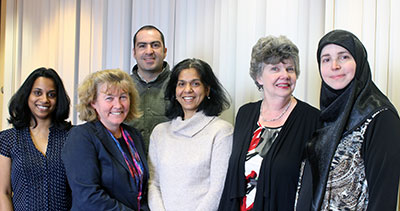TAU-INESSS partnership for better use of resources
Two reports published by the Health Technology Assessment Unit (TAU) of the McGill University Health Centre (MUHC) will serve as a basis for a field evaluation of pacemakers used in cardiac resynchronisation therapy (CRT) for patients with heart failure across Quebec. The project will be undertaken by the Institut national d’excellence en santé et en services sociaux (INESSS), a provincial agency that promotes the efficient use of resources in the health services sector.
“This project serves as an example of how a hospital-based technology assessment unit in Quebec can partner with INESSS to address questions of appropriateness of use of resources across the province,” says Nandini Dendukuri, director of TAU.
The decision to do a field evaluation of the pacemakers was taken after an INESSS-funded literature review by TAU raised questions about the benefits of the procedure for certain patients.

“The use of CRT-pacemakers has increased considerably in Quebec and elsewhere in the world in the last five years,” says Nisha Almeida, an epidemiologist and research scientist at TAU who co-authored the report. “We analyzed clinical practice guidelines and noticed that while these devices are clearly beneficial for selected patients with heart failure, the evidence of their efficacy in other groups of patients is far less clear. This technology needs to be better evaluated, and the only way to do that is to get information directly from the hospitals.”
“By monitoring the profile of patients who receive these expensive devices and by documenting long-term patient outcomes, we can gain a better understanding of our practices and also contribute to bridging the evidence gap,” says Nandini Dendukuri. “Each pacemaker costs around $11,000 per initial implant and $14,400 when coupled with a defibrillator. The impact on a hospital’s limited budget is considerable.”
Collecting data across Quebec
INESSS will now collect and compare data from all electrophysiology programs in tertiary cardiology centres across Quebec concerning the number, characteristics and outcomes of patients who were implanted with a CRT-pacemaker to replace or upgrade an existing device.
“TAU’s work has saved us a huge amount of time,” says Laurie Lambert, epidemiologist at INESSS’s Cardiology Evaluation Unit. “Instead of redoing the literature review, we’re taking the MUHC report a step further. By recording patients’ characteristics in a systematic manner, we’ll be able to determine if they’re selected according to clinical guidelines and in the same way across the six cardiology centres that implant pacemaker/defibrillator devices in Quebec.”
This effort will also help implement TAU’s recommendation to the MUHC to collect local data beyond the INESSS initiative on patients who are receiving a CRT pacemaker for the first time. Nandini Dendukuri hopes this collaboration between INESSS and TAU will raise awareness about the important role of technology assessment in health care.
“Our healthcare system cannot afford to provide unlimited health services to everyone irrespective of the cost,” she says. “So it’s essential to ensure the best use of resources by giving priority to appropriate use of technology that can actually help prolong the life or improve the quality of life of our patients.”
Did you know?
Like Clinical Care, Research and Teaching, Health Technology Assessment is a priority at the McGill University Health Centre (MUHC). The Health Technology Assessment Unit(TAU) was created in 2001 with the purpose of advising the MUHC in difficult resource allocation decisions. TAU uses an approach based on sound, scientific technology assessments and a transparent, fair decision-making process to produce reports and issue recommendations. It also contributes to the training of personnel in the field of health technology assessment.
